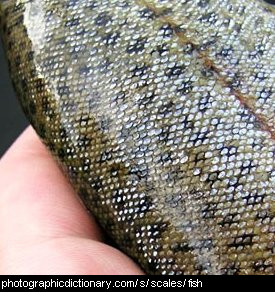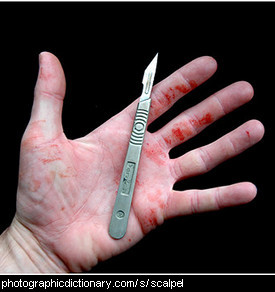The saxophone was invented in 1841 by Adolphe Sax. He wanted to make an instrument with characteristics from both the woodwind family (including flutes) and the brass family (including trumpets). Saxophones are usually made of brass, but are a member of the woodwind family.
The sound in a saxophone is made by a small cane reed in the mouthpiece that vibrates when you blow air through it. The different notes are made by opening and closing holes along the length of the saxophone.
A scaffold is a framework that people stand on while they are building or repairing a tall structure. In some countries the frame of scaffolding is made from bamboo, but it is more commonly made from steel or aluminium. Scaffolding has platforms that can support people, tools and building materials. Some scaffolding is so small you can use it to paint the walls inside your house, and some is several storeys high. Using scaffolding is much safer than using a ladder.
Sis forScales (fish)
Sis forScales (device)
Scales are a device used for measuring how heavy something is. There are many different types of scales. Originally scales were made to balance like a seesaw, and you put the thing you wanted weighed on one side and weights on the other side until it balanced out.
Today, scales are often digital and need batteries to work. There are scales you stand on so you know how much you weigh, kitchen scales like in the picture so you can weigh food, and really big industrial scales to weigh trucks full of grain so it can be sold by weight.
Scientific name: allium wakegi
Scientific name: family: pectinidae
Scallops are a kind of mollusc related to clams and snails. Their shell is in two halves with a hinge joining them. Scallop shells are a very pretty fan-shape.
Scallops can swim by opening and closing their shells. The muscle that holds the two halves of the shell together is the part that is commonly seen cooked for food, as you can see in the picture.





















